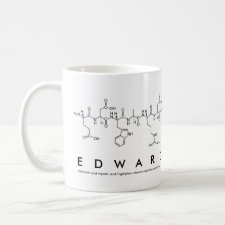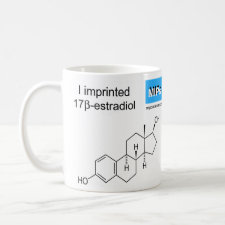
Authors: Yang Y, Lai EPC
Article Title: An investigation of porous structure in molecularly imprinted polymer for sensor development: Non-linear fluorescence quenching of 17β-estradiol bound inside MIP submicron particles by sodium nitrite and methacrylamide.
Publication date: 2010
Journal: Journal of Photochemistry and Photobiology A-Chemistry
Volume: 213
Issue: (2-3)
Page numbers: 123-128.
DOI: 10.1016/j.jphotochem.2010.05.010
Alternative URL: http://www.sciencedirect.com/science/article/B6TGY-508CMPH-1/2/a9171b01b57a2bb20db5d373f3d54e17
Abstract: 17β-Estradiol (E2) molecularly imprinted and non-imprinted poly(methacrylic acid-co-ethylene glycol dimethacrylate) submicron particles (MIP and NIP) have been synthesized in the presence and absence of template E2 molecules. The sizes of MIP and NIP particles were determined via a nanoDLS particle size analyzer to be 477 ± 11 and 373 ± 21 nm. After these naturally non-fluorescent MIP and NIP particles bound with E2 molecules as a fluorophore, strong fluorescence at λem = 310 ± 1 nm was detectable when excited by light of λex = 280 ± 1 nm. Sodium nitrite and methacrylamide were selected as two fluorescence quenchers with different ionic/molecular sizes. They both exhibited non-linear quenching behavior in the Stern-Volmer plots. The smaller quencher (sodium nitrite) ionized in water to produce nitrite anions that easily penetrated into the porous MIP particles and quenched the fluorescence emission from the E2 molecules bound inside. It produced a dynamic quenching constant (Ksv) of 23.0 ± 1.3 M-1 when the concentration of E2-MIP particles was 2.5 mg/mL in water. The larger quencher (methacrylamide) was sterically hindered in penetrating the pores of MIP particles. Its dynamic quenching constant (Ksv) hence became small, to be less than 1.0 ± 0.5 M-1. This approach enabled an investigation of the porous structure in MIP particles for development of a novel E2 sensing scheme
Template and target information: 17β-Estradiol, E2
Author keywords: Poly(MAA-co-EGDMA), MIP submicron particles, 17β-estradiol, fluorescence quenching, Porous structure



Join the Society for Molecular Imprinting

New items RSS feed
Sign-up for e-mail updates:
Choose between receiving an occasional newsletter or more frequent e-mail alerts.
Click here to go to the sign-up page.
Is your name elemental or peptidic? Enter your name and find out by clicking either of the buttons below!
Other products you may like:
 MIPdatabase
MIPdatabase









